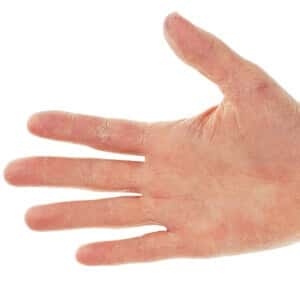
Eczema is one of those old-fashioned words, like apoplexy, that sounds as though it should have become obsolete. Unfortunately, the condition it describes is still very much in evidence, now perhaps more than ever.
Dermatologists estimate that the red itchy rash of chronic eczema may affect as much as 20 percent of the population in Scandinavia, Australia, and England. The United States has similar figures, compared to only about 2 percent of the population in places like Iran and China.
Scientists don’t know why the rate of eczema varies so widely from one place to another. A lot of other things are still pretty mysterious about eczema, too. The researchers who study it have not come up with a single unified measure of eczema severity, so it is sometimes difficult to compare studies. In fact, when dermatologists discuss eczema, they frequently use the term atopic dermatitis instead. It means the same thing: a nasty, itchy rash, especially in places where the skin creases (like inside the elbows and on the backs of the knees). It may be associated with dry skin, redness, and irritation on the cheeks or forehead, as well as asthma or hay fever.
Very young kids with eczema may have family members with asthma or hay fever. Atopic dermatitis is pretty common in children and may start early, at as young as 2 or 3 months of age.275 If it is severe, the itching can drive the sufferer crazy and even keep him or her awake at night. It is no wonder patients and their parents are anxious to get relief.
Eczema, or more precisely atopic dermatitis, is an itchy skin condition that is often chronic. Besides the itch, skin affected by eczema may develop a rash with liquid-filled bumps. Skin-fold areas, such as the back of the knees, seem to be especially susceptible to the rash. Eczema is often accompanied by generalized dry skin, and the patient may also have asthma or hay fever.
There’s no cure for eczema, although sometimes it does go away for a period of time. No treatment works all the time or for everyone, so people are understandably on the lookout for something that might work better than what they have already tried.
Eczema is quite common in young children, and parents need to be especially vigilant in weighing the benefits against the risks of various therapies they might use for their kids.
- Avoid prolonged exposure to water or any irritating chemicals, including soap or detergent. After washing hands or bathing, apply a moisturizer within 3 minutes of patting the skin dry.
- A person with a documented food allergy that makes eczema worse should avoid that food. Eggs may be a culprit for young children.
- Probiotics can help in some instances. Look for a high-quality supplement with viable organisms. Lactobacillus GG and L. fermentum have done well in studies.
- Fatty acid supplements providing gamma-linolenic acid (such as evening primrose oil, borage oil, or black currant seed oil) help some individuals, but have not performed well in clinical trials. One exception is hemp seed oil, although the data on it are limited to one study. It might be worth a try.
- Cut table sugar and simple starches out of your diet. A low-glycemic-index approach might be worth trying, though there is no scientific evidence that it will control eczema.
- According to anecdotal reports, eating salsa may ease eczema symptoms. If you like spicy foods, go for it.
- Drinking 4 cups of oolong tea daily was shown in one study to help eczema that wasn’t responding to other treatments. It is easy and nontoxic, so it would be worth a try.
- Vitamin E capsules did very well in one study of people with atopic dermatitis. Check with your doctor first if you are a smoker or at high risk of heart disease; some large studies suggest vitamin E might increase your risk of serious complications. For others, there is very little risk in a short-term personal trial to see if it helps your skin.
- Apply Noxzema—the original formula in the blue jar—to the affected areas. The herbal ingredients, camphor, menthol, and eucalyptol, may soothe itching. Be alert for increased irritation, though.
- Over-the-counter hydrocortisone cream (0.5 or 1 percent) may help if the eczema is mild.
- CamoCare Soothing Cream is available without a prescription and may ease itching, redness, and inflammation.
- Blend up a batch of honey, beeswax, and olive oil for a homemade salve that may help. It sounds sticky, though.
- Use prescription steroid creams according to the physician’s instructions. Don’t use a potent steroid on the face, or for too long a time. “Pulsing†the dose—applying the cream for 3 to 7 days straight, then not using it for a time—may help. Ask your doctor.
- Drugs such as Protopic (tacrolimus) or Elidel (pimecrolimus) may be helpful as back-up treatment if the steroid creams stop working or don’t work well enough. Don’t overuse these creams in young children (and don’t use them at all in kids under 2) because the immune suppression they induce may increase the risk of infection and even cancer.
- Experiment with other approaches such as light therapy or hypnosis. Work with your physician to coordinate a safe and effective regimen.

